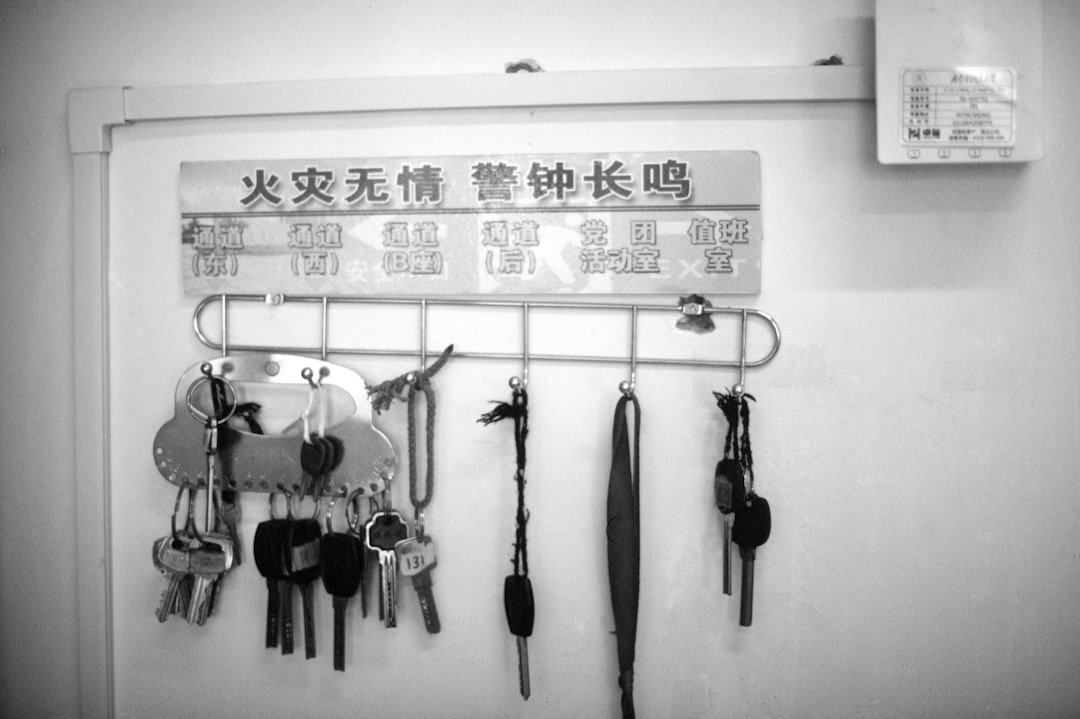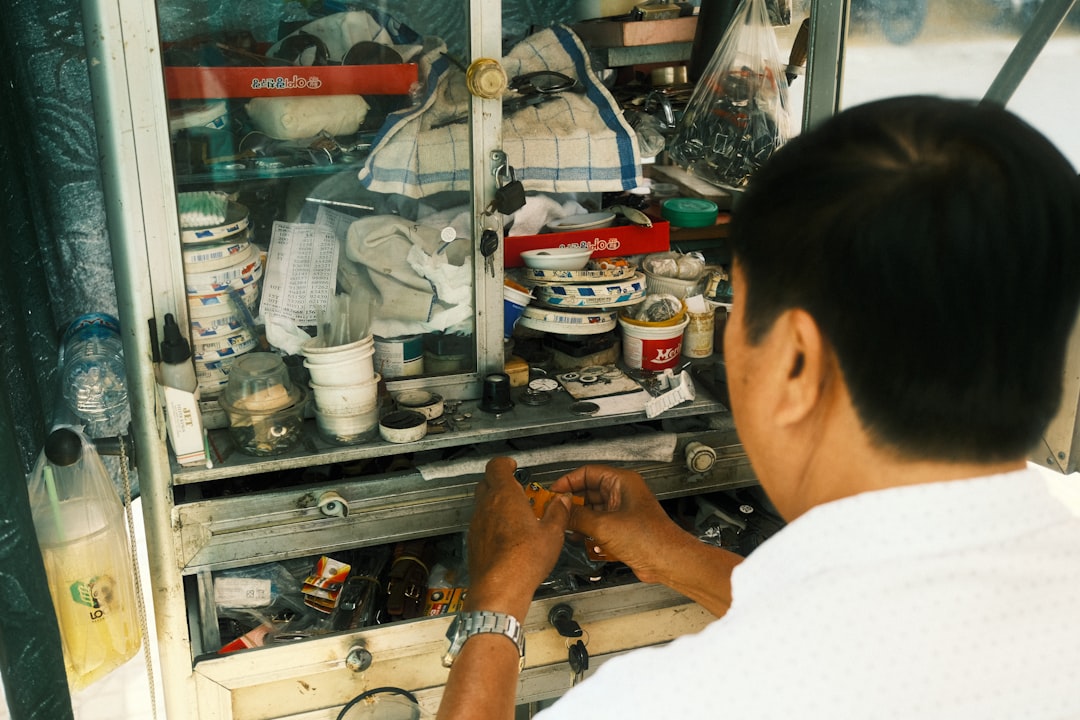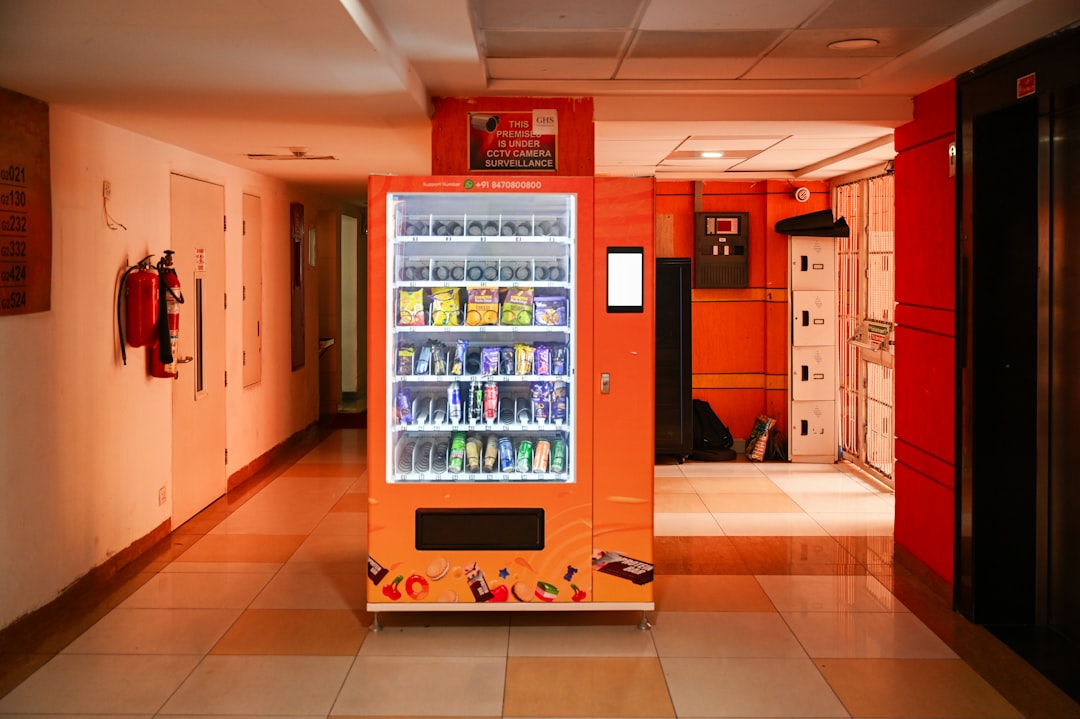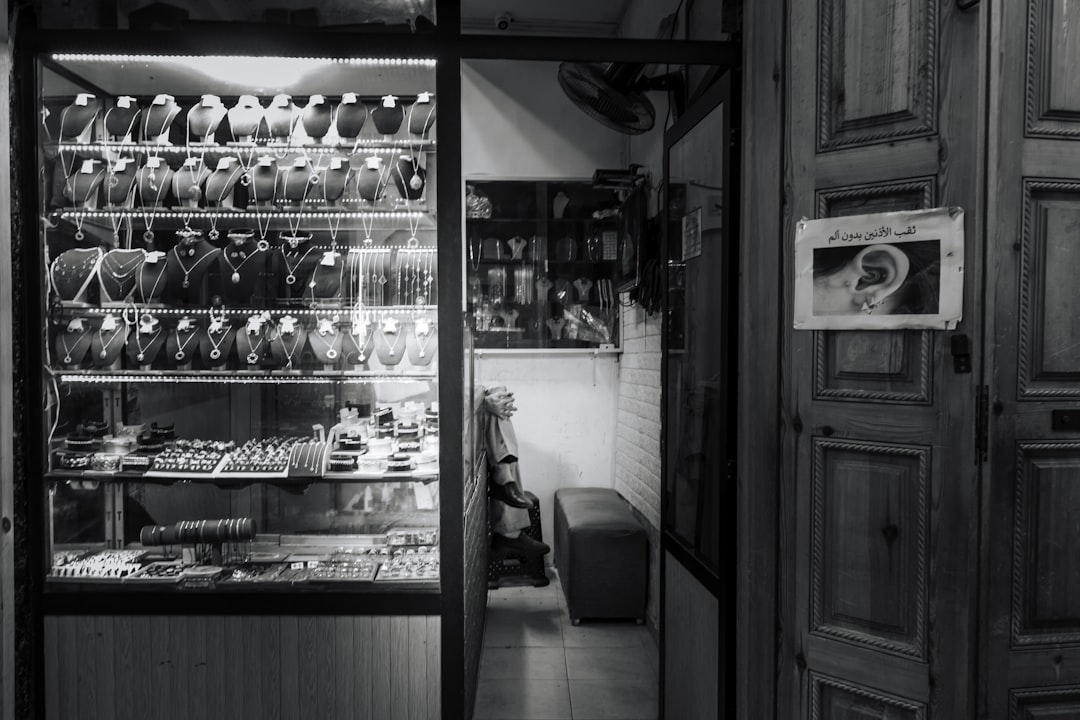

Engage prospects with a scan and streamline customer engagement with FREE QR code marketing tools by Sona – no strings attached!
Create a Free QR CodeFree consultation

No commitment

Engage prospects with a scan and streamline customer engagement with FREE QR code marketing tools by Sona – no strings attached!
Create a Free QR CodeFree consultation

No commitment
In today’s digitally driven world, QR codes have evolved from a novelty to a strategic powerhouse that bridges offline engagement with online action. For cabinet repair services, they offer a fast and low-friction way to convert interest from print materials, signage, and in-person interactions into appointments, estimates, and ongoing communication. Customers can scan with a phone camera, land on exactly the right resource, and take action in seconds.
Cabinet repair teams often invest heavily in yard signs, flyers, mailers, and shows, only to watch a portion of interested homeowners slip away because the next step feels cumbersome. QR codes change that dynamic. They turn every physical asset into a digital entry point that captures intent, routes visitors to the right destination, and records the interaction for follow-up and attribution.
This article shows how to plan and execute QR code programs tailored to cabinet repair workflows. You will learn what formats to use, where to place them, how to track scans through to booked jobs, and how to integrate Sona QR with your CRM so every scan is actionable and measurable.

QR codes connect printed marketing to online results for cabinet repair services. When implemented thoughtfully, they remove friction from booking, enable instant access to proof-of-work content such as before-and-after galleries, and create a measurable path from a scan to a scheduled project.
Start by replacing analog processes that obscure intent and slow down response times. Static brochures and business cards can only inform; they cannot capture leads. Paper estimate request forms are often incomplete or lost. Phone numbers on signs rely on perfect timing and memory. With QR codes, every piece of collateral becomes interactive. A homeowner can scan a yard sign and open a mobile quote form with pre-filled context from the campaign source, then receive an automated follow-up within minutes.
Sona QR supports every step of this transformation. You can generate dynamic codes, update destinations without reprinting, connect scans to contacts in your CRM, and view attribution by channel, asset, and location. The result is a modern lead engine that starts with a simple scan and ends with a scheduled cabinet repair.

Cabinet repair companies compete in a world where homeowners research online but still encounter your brand in the real world first. A yard sign, a door hanger, or a flyer at a hardware store might spark attention. Without an instant next step, that interest often fades. QR codes provide an immediate path from glance to action.
Speed and simplicity are key. Nobody wants to type a long URL or download an app to get a quote. A single scan can open a mobile-friendly booking page, a repair explainer video, or a gallery of finishes and hardware options. This keeps momentum high and reduces drop-off at the most fragile moment in the customer journey.
In short, QR codes turn traditional marketing into a two-way channel. They invite action, capture data at the source, and uncover what truly drives cabinet repair bookings.

Cabinet repair services benefit most from formats that accelerate scheduling, streamline communication, and store contact details. The right format depends on the context and the action you seek.
Dynamic codes are ideal when you want tracking, flexibility, and the ability to redirect campaigns on the fly. Static codes are acceptable for permanent destinations such as a general contact page, but they limit your ability to iterate without reprinting.

The best placements align with high-intent moments and common friction points. Identify where homeowners see your brand and what they might want to do next, then place a QR code that makes that action effortless.
Yard signs and vehicle wraps are prime real estate. A passerby who notices your team working on a kitchen is already primed to consider a project. A prominent code with a benefit-led call to action such as “Scan for a free repair estimate” can turn drive-by interest into a captured lead while the project is fresh in mind.
By mapping the typical buyer journey, you can select placements that help at each stage. Awareness placements encourage exploration, consideration placements provide proof and options, and conversion placements push directly to booking. Each scan becomes an intent signal that you can track and act on.

The most effective QR programs focus on a few core motions that repeat across the business. Align each use case with a specific moment in the customer journey and provide a focused next step.
Each use case captures high-intent signals and improves the customer experience at the same time. Over time, you can expand into additional flows such as project galleries, cabinet hardware catalogs, or financing pre-qualification to support more complex journeys.
Every scan conveys intent. Where the scan occurred, which asset triggered it, and what the visitor did next can all inform your next touch. By deploying unique QR codes at each stage of the journey, cabinet repair teams can segment automatically and tailor follow-up to what the homeowner cares about most. For segmentation fundamentals, read Sona’s blog post titled The Essential Guide to Intent Data.
For example, a scan from a hardware store flyer suggests a different mindset than a scan from a completed job’s leave-behind. The former may be exploring options; the latter likely has a positive impression and may be ready to refer or purchase add-on services. Tagging these scans appropriately sets the stage for relevant messaging.
Industry-specific distinctions help refine messaging. For cabinet repair, segments such as “kitchen repair,” “bathroom vanity repair,” “rental unit turnover,” and “finish refresh vs. structural repair” map directly to services and pricing conversations. The richer your segmentation, the more precisely you can retarget and convert.
QR codes serve as connective tissue between offline materials and your digital systems. They bring measurability to assets that were once opaque and create a consistent thread from initial interest to booked work. When you integrate QR codes across channels, your marketing becomes more efficient and your data more complete.
Start by aligning QR destinations with the role of each channel. A flyer at a hardware store should send people to a short explainer and booking form, while a post-service magnet should route directly to a review page. Consistency matters. The promise near the code must match the destination exactly for trust and ease.
With Sona QR, you can manage all QR assets in one place, monitor performance by channel, and sync scan data to your CRM. This gives you a clean view of how offline touchpoints influence your pipeline so you can allocate spend where it matters.
A strong QR program is built on clarity of purpose, thoughtful design, disciplined deployment, and consistent optimization. The following checklist distills the process into five essential steps you can repeat across campaigns and placements.
Use this framework to plan a single pilot or to scale a multi-location rollout. The key is to align each step with a measurable outcome such as estimate requests, on-site bookings, or review volume.
Define one specific outcome and a single next step for the scanner. For cabinet repair services, examples include appointment booking from a hardware store flyer, estimate capture at a home improvement expo, or review collection after a finished repair.
Select the format that best supports the desired action. Dynamic codes are typically the right choice for marketing because they provide tracking and flexibility.
Design matters. A QR code is a call to action, not just a graphic. Treat it like a button with clear benefits, visual prominence, and trust cues.
Sequence your rollout. Start with two or three placements where missed leads are common and the physical context supports scanning. Expand after you validate performance.
Treat QR deployments as living campaigns. Measure what happens after the scan, not just the scan itself, and iterate for higher conversion.
Tracking is the backbone of any QR code strategy. Scans alone do not prove value; you need to understand the buyer’s progression from a physical interaction to a booked job, and eventually to revenue. Proper instrumentation reveals which assets deserve more investment and which should be retired or reworked.
Start by deciding what you will measure. At a minimum, capture scans by asset, location, device type, and time. Then connect the dots to downstream outcomes such as estimate submissions, consultation bookings, and closed jobs. This provides the attribution needed to defend spend and to refine your approach. For deeper strategy, read Sona’s blog post titled The Essential Guide to Offline Attribution. For model selection, see Sona’s blog post titled Single vs Multi-Touch Attribution Models.
With advanced tools like Sona QR and Sona.com, you can go deeper:
The outcome is a performance loop. You see which assets win, shift spend accordingly, and improve creative in cycles. Over time, even small percentage gains in scan-to-book conversion compound into substantial revenue impact.
Once your first campaign is running, amplify results with a few targeted best practices. Focus on the tips that align with your most common media, the environments where customers interact with your brand, and the tools your team already uses.
First, make every code unique to its placement. A code on a door hanger should be different from the one on a vehicle wrap, even if they land on similar pages. This yields clean attribution and clearer insights. Next, automate follow-up. The value of instant engagement is lost if your response takes days.
Creative deployment ideas fit naturally in cabinet repair. Place a QR code inside a repaired cabinet that opens a short care guide video and a maintenance request form. Add a code to estimate folders that routes to a project gallery filtered by style and finish. These small touches enhance the experience while building your dataset for smarter retargeting.
QR codes are a strategic asset for cabinet repair services. They convert passive touchpoints into active funnels, power instant engagement, and reveal which offline interactions lead to real work. By embedding QR codes into yard signs, brochures, invoices, and event materials, you close attribution gaps and make it simple for homeowners to move from interest to action.
The advantage compounds when you connect scans to your CRM. Sona QR and Sona.com allow you to manage codes centrally, update destinations without reprinting, sync scan activity to contact records, and attribute revenue to the physical assets that prompted engagement. This data clarity helps you invest confidently in the channels and creatives that perform.
Whether your goal is to increase kitchen cabinet repair bookings, collect more post-service reviews, or create a seamless quote funnel, QR codes provide the missing link between real-world interest and digital conversion. Start with a focused pilot, learn quickly, and scale what works. In a market where speed, trust, and measurable outcomes win, QR-enabled workflows turn everyday interactions into lasting growth. Start creating QR codes for free.
QR codes have revolutionized cabinet repair services by transforming how technicians and customers access vital information instantly. From providing detailed repair guides to scheduling appointments and offering maintenance tips, QR codes unlock seamless communication and elevate the client experience while streamlining operations. Imagine a world where every cabinet repair job is backed by precise, on-demand support that boosts customer satisfaction and repeat business.
With Sona QR, cabinet repair businesses can create dynamic, trackable QR codes in seconds, update content on the fly without reprinting, and monitor engagement to optimize service delivery. This means you can quickly adapt to customer needs, capture valuable insights on repair trends, and turn every scan into actionable opportunities that grow your brand’s reputation and revenue.
Start for free with Sona QR today and empower your cabinet repair service to connect smarter, work faster, and deliver results that truly matter.
QR codes provide a fast and simple way to connect offline marketing materials to online actions, enabling homeowners to request estimates, schedule appointments, and access maintenance tips instantly.
Useful QR code formats include web links to landing pages, vCards for contact info, pre-filled SMS or email messages, Wi-Fi access codes in showrooms, and app download links.
Effective placements include yard signs, vehicle wraps, job site leave-behinds, invoices, direct mailers, brochures, event signage, and showroom displays where homeowners encounter your brand.
By measuring scan volume, conversion rates to form fills or appointments, tracking scan location and time, and syncing data with a CRM to attribute leads and revenue to specific offline assets.
Choose a clear use case, select the appropriate QR code type, design and test the code for visibility and scannability, deploy across targeted channels, and track and optimize performance continuously.
Automate post-scan follow-ups by triggering emails or SMS messages from your CRM, such as instant thank you notes and appointment reminders, to engage customers promptly after scanning.
Common use cases include estimate requests, collecting customer reviews and referrals, providing maintenance tips and warranty registration, and sharing project galleries or hardware catalogs.
Dynamic QR codes allow you to update destinations without reprinting, track scans for attribution, and enable retargeting, making campaigns more flexible and measurable.
They turn physical assets like flyers and signs into interactive entry points that capture homeowner intent and guide them to digital resources, improving lead capture and conversion.
Use large, high-contrast codes with clear, benefit-led calls to action placed in high-visibility locations, and train your team to explain the QR code’s value to customers.
Use Sona QR's trackable codes to improve customer acquisition and engagement today.
Create Your FREE Trackable QR Code in SecondsJoin results-focused teams combining Sona Platform automation with advanced Google Ads strategies to scale lead generation

Connect your existing CRM

Free Account Enrichment

No setup fees
No commitment required

Free consultation

Get a custom Google Ads roadmap for your business






Launch campaigns that generate qualified leads in 30 days or less.
